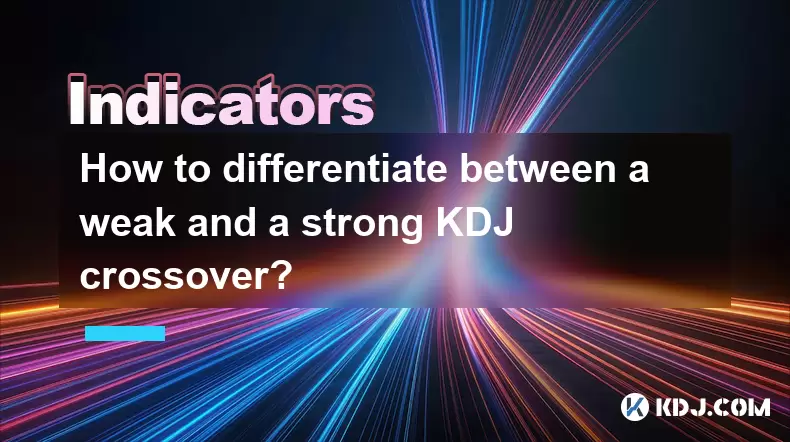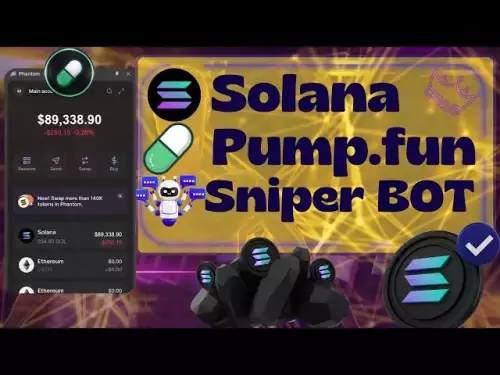-
 Bitcoin
Bitcoin $115100
-1.30% -
 Ethereum
Ethereum $4758
-1.70% -
 XRP
XRP $3.027
-2.19% -
 Tether USDt
Tether USDt $0.9998
-0.01% -
 BNB
BNB $883.2
-1.42% -
 Solana
Solana $204.0
2.62% -
 USDC
USDC $1.000
0.02% -
 Dogecoin
Dogecoin $0.2371
-0.97% -
 TRON
TRON $0.3612
-1.24% -
 Cardano
Cardano $0.9128
-2.19% -
 Chainlink
Chainlink $26.13
-3.93% -
 Hyperliquid
Hyperliquid $44.73
0.90% -
 Sui
Sui $3.715
-0.56% -
 Stellar
Stellar $0.4153
-2.41% -
 Ethena USDe
Ethena USDe $1.000
-0.04% -
 Bitcoin Cash
Bitcoin Cash $588.9
-2.06% -
 Avalanche
Avalanche $25.91
3.27% -
 Hedera
Hedera $0.2525
-1.45% -
 Litecoin
Litecoin $120.9
-1.35% -
 UNUS SED LEO
UNUS SED LEO $9.607
0.30% -
 Toncoin
Toncoin $3.382
-0.31% -
 Shiba Inu
Shiba Inu $0.00001329
-0.38% -
 Uniswap
Uniswap $11.38
-1.67% -
 Polkadot
Polkadot $4.222
2.83% -
 Aave
Aave $354.5
4.93% -
 Dai
Dai $0.0000
0.00% -
 Bitget Token
Bitget Token $4.704
-1.49% -
 Cronos
Cronos $0.1565
1.83% -
 Ethena
Ethena $0.7463
1.55% -
 Monero
Monero $265.8
-0.39%
How to differentiate between a weak and a strong KDJ crossover?
A strong KDJ crossover in oversold territory, confirmed by volume, divergence, and higher timeframe alignment, signals high-probability trend reversals in crypto.
Aug 13, 2025 at 11:35 am

Understanding the KDJ Indicator in Cryptocurrency Trading
The KDJ indicator is a momentum oscillator widely used in cryptocurrency trading to identify overbought and oversold conditions. It consists of three lines: the %K line, the %D line (a moving average of %K), and the %J line (a measure of deviation between %K and %D). Traders rely on crossovers between the %K and %D lines to generate buy or sell signals. However, not all crossovers carry the same significance. The strength of a crossover determines its reliability, which is crucial when trading volatile assets like cryptocurrencies. A strong KDJ crossover often leads to sustained price movements, while a weak crossover may result in false signals or short-lived reversals.
Identifying the Position of the Crossover
The location of the crossover within the KDJ scale is a primary factor in determining its strength. A crossover occurring in the oversold region (below 20) is generally considered more reliable for bullish signals. When the %K line crosses above the %D line in this zone, it suggests that downward momentum is exhausted and a potential upward trend may begin. Conversely, a crossover in the overbought region (above 80) where %K crosses below %D indicates a stronger bearish signal.
- Ensure the KDJ settings are standardized (typically 9,3,3) for consistency.
- Confirm that the %K and %D values are below 20 for bullish crossovers.
- Verify that the values are above 80 for bearish crossovers.
- Use candlestick patterns near the crossover point to validate the signal.
A crossover in the neutral zone (between 20 and 80) lacks conviction and is often classified as weak, especially if it occurs during a sideways market.
Analyzing the Slope and Angle of the Crossover
The steepness of the %K line’s ascent or descent at the point of intersection with the %D line provides insight into the momentum behind the crossover. A sharp, nearly vertical rise in %K crossing %D indicates strong buying pressure and a high probability of continuation. This kind of crossover is common after a prolonged downtrend in cryptocurrencies like Bitcoin or Ethereum.
- Look for a rapid upward movement in the %K line toward the %D line.
- Measure the angle between the two lines before and after the crossover.
- Avoid crossovers where the %K line approaches %D at a shallow angle.
- Confirm with volume indicators—rising volume supports a steep crossover.
A gentle or gradual crossover, where both lines move slowly toward each other, usually reflects weak momentum and may not lead to a meaningful price shift.
Evaluating Divergence Before the Crossover
Bullish or bearish divergence between price action and the KDJ lines can significantly enhance the strength of a crossover. For example, if the price of a cryptocurrency makes a lower low, but the KDJ indicator forms a higher low, this bullish divergence suggests weakening selling pressure. A subsequent %K/%D bullish crossover in this context is more credible.
- Plot the KDJ on a 4-hour or daily chart to spot divergence clearly.
- Compare recent price lows with corresponding KDJ lows.
- If price decreases but KDJ increases, divergence is present.
- Wait for the crossover to occur after divergence confirmation.
Similarly, if the price reaches a higher high while the KDJ forms a lower high, bearish divergence exists, and a bearish crossover gains strength. Absence of divergence often correlates with weak crossovers.
Confirming with Volume and Price Action
Volume plays a critical role in validating the strength of a KDJ crossover. A strong bullish crossover should coincide with a noticeable increase in trading volume, indicating active participation from buyers. In contrast, a crossover with flat or declining volume suggests lack of interest and is likely weak.
- Monitor volume bars beneath the price chart during the crossover.
- Use volume-weighted moving averages (e.g., 20-period VWAP) to assess trends.
- Look for bullish candlestick patterns such as engulfing or hammer formations.
- Avoid acting on crossovers that occur during consolidation phases.
Price action confirmation includes observing whether the cryptocurrency breaks through key resistance or support levels immediately after the crossover. A breakout with strong momentum supports a strong signal.
Assessing Market Context and Timeframe Alignment
The broader market environment influences the reliability of KDJ crossovers. A bullish crossover on a 1-hour chart may be weak if the 4-hour and daily charts show a dominant downtrend. Multi-timeframe analysis is essential.
- Check the KDJ on higher timeframes (e.g., 4-hour, daily) for alignment.
- A bullish crossover on multiple timeframes increases signal strength.
- Avoid counter-trend crossovers unless supported by strong fundamentals.
- Consider Bitcoin’s trend when trading altcoins—most follow its direction.
A crossover that aligns with the prevailing trend across several timeframes is inherently stronger than an isolated signal on a lower timeframe.
Frequently Asked Questions
What KDJ settings are best for identifying strong crossovers in crypto?
The default 9,3,3 settings are most widely used and provide a balanced sensitivity. Adjusting the periods may lead to overfitting. For longer-term trades, some traders use 14,3,3 to reduce noise, but the standard configuration remains optimal for most cryptocurrency applications.
Can a weak KDJ crossover become strong later?
Yes, if subsequent price action confirms the initial signal. For example, a weak bullish crossover in the neutral zone may gain strength if the price begins to rise and the KDJ enters the oversold area with renewed momentum. Re-evaluation after new data is essential.
How does volatility affect KDJ crossover strength in crypto markets?
High volatility can generate frequent but weak crossovers due to price spikes. During such periods, filtering with Bollinger Bands or ATR helps distinguish real momentum shifts from noise. Strong crossovers in volatile markets often occur after volatility contraction.
Should I use KDJ alone or combine it with other indicators?
Relying solely on KDJ increases the risk of false signals. Combining it with RSI, MACD, or moving averages improves accuracy. For instance, a KDJ bullish crossover coinciding with MACD histogram turning positive offers stronger confirmation.
Disclaimer:info@kdj.com
The information provided is not trading advice. kdj.com does not assume any responsibility for any investments made based on the information provided in this article. Cryptocurrencies are highly volatile and it is highly recommended that you invest with caution after thorough research!
If you believe that the content used on this website infringes your copyright, please contact us immediately (info@kdj.com) and we will delete it promptly.
- Whitelist Frenzy: Is This the Top Meme Coin of 2025?
- 2025-08-24 08:45:22
- Ruvi AI: The AI Token Igniting a Cardano-esque Rally?
- 2025-08-24 07:45:12
- Altcoins in a Market Dip: Is Polygon (MATIC) Poised for a Reversal?
- 2025-08-24 07:05:13
- Crypto, Pepe, and Investment: Navigating the Meme Coin Mania in 2025
- 2025-08-24 06:45:29
- VanEck's JitoSOL ETF: A New Era for Solana and Institutional Crypto
- 2025-08-24 07:45:12
- Dogecoin, Shiba Inu, and the Rise of New Crypto Contenders
- 2025-08-24 08:05:30
Related knowledge

What does it mean when the +DI and -DI cross frequently in the DMI indicator but the ADX is flattening?
Aug 11,2025 at 03:15am
Understanding the DMI Indicator ComponentsThe Directional Movement Index (DMI) is a technical analysis tool composed of three lines: the +DI (Positive...

What does the sudden appearance of a "dark cloud cover" candlestick pattern during an uptrend indicate?
Aug 13,2025 at 11:35am
Understanding the 'Dark Cloud Cover' Candlestick PatternThe dark cloud cover is a bearish reversal pattern in technical analysis that typically appear...

What does it mean when the moving average, MACD, and RSI all send buy signals simultaneously?
Aug 11,2025 at 01:42pm
Understanding the Convergence of Technical IndicatorsWhen the moving average, MACD, and RSI all generate buy signals at the same time, traders interpr...

What does it mean when both the KDJ indicator and the RSI show overbought signals simultaneously?
Aug 13,2025 at 11:35am
Understanding the KDJ Indicator in Cryptocurrency TradingThe KDJ indicator is a momentum oscillator derived from the Stochastic Oscillator, widely use...

What does it mean when the price is trading above the SAR indicator but the red dots are densely packed?
Aug 09,2025 at 11:49pm
Understanding the SAR Indicator and Its Visual SignalsThe SAR (Parabolic Stop and Reverse) indicator is a technical analysis tool used primarily to de...

What does it mean when the candlestick chart forms a "Morning Star" but trading volume is sluggish?
Aug 12,2025 at 06:28pm
Understanding the Morning Star Candlestick PatternThe Morning Star is a three-candle bullish reversal pattern commonly observed in cryptocurrency pric...

What does it mean when the +DI and -DI cross frequently in the DMI indicator but the ADX is flattening?
Aug 11,2025 at 03:15am
Understanding the DMI Indicator ComponentsThe Directional Movement Index (DMI) is a technical analysis tool composed of three lines: the +DI (Positive...

What does the sudden appearance of a "dark cloud cover" candlestick pattern during an uptrend indicate?
Aug 13,2025 at 11:35am
Understanding the 'Dark Cloud Cover' Candlestick PatternThe dark cloud cover is a bearish reversal pattern in technical analysis that typically appear...

What does it mean when the moving average, MACD, and RSI all send buy signals simultaneously?
Aug 11,2025 at 01:42pm
Understanding the Convergence of Technical IndicatorsWhen the moving average, MACD, and RSI all generate buy signals at the same time, traders interpr...

What does it mean when both the KDJ indicator and the RSI show overbought signals simultaneously?
Aug 13,2025 at 11:35am
Understanding the KDJ Indicator in Cryptocurrency TradingThe KDJ indicator is a momentum oscillator derived from the Stochastic Oscillator, widely use...

What does it mean when the price is trading above the SAR indicator but the red dots are densely packed?
Aug 09,2025 at 11:49pm
Understanding the SAR Indicator and Its Visual SignalsThe SAR (Parabolic Stop and Reverse) indicator is a technical analysis tool used primarily to de...

What does it mean when the candlestick chart forms a "Morning Star" but trading volume is sluggish?
Aug 12,2025 at 06:28pm
Understanding the Morning Star Candlestick PatternThe Morning Star is a three-candle bullish reversal pattern commonly observed in cryptocurrency pric...
See all articles

























































































